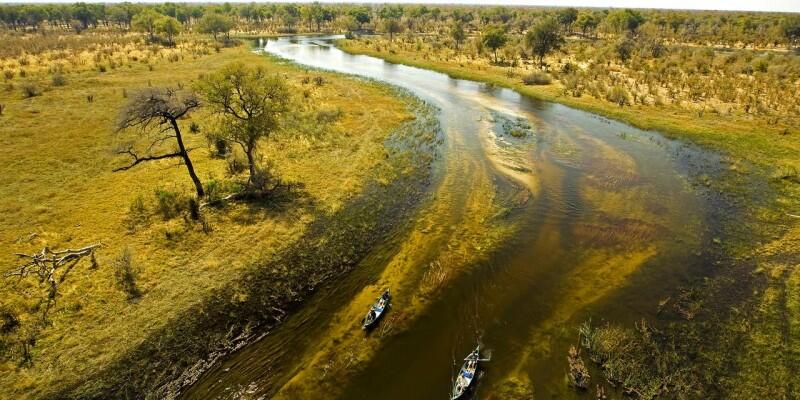Mirrored views on the river
On a continent filled with remarkable natural habitats, Botswana’s Selinda Spillway is one of Africa’s most pristine. Located in the country’s north, the Selinda Spillway is a channel that runs in two directions – connecting the upper region of Botswana’s Okavango Delta in the west and Namibia’s Linyanti swamp in the east. It also serves as the centrepiece of the Selinda Reserve, a 320,000-acre expanse of vast woodlands, plains, lagoons and wetlands.
Navigating the spillway
One of the best ways to explore the reserve is via canoe, on a five-day, four-night expedition that navigates the spillway’s floodplains. The 45km canoe trail begins northeast of the Okavango Delta and follows the winding channels eastward, ending at the Selinda Camp, one of two camps on the reserve.
A spectacular safari
The spillway also serves as an important link between the Okavango Delta and Chobe National Park (pictured), in Botswana’s northeast. Africa’s first national park, Chobe encompasses the most biologically diverse region in the country and is famous for its large populations of lions, Kalahari elephants and buffalos.
Botswana’s incredible oasis
One of Botswana’s most famous attractions, the Okavango Delta has remained relatively undeveloped due to decades of civil war and border conflicts around the nearby Angolan drainage basin. People residing around stretches of arable land along the Okavango River live much as they did more than 400 years ago. They are stewards of Africa’s last remaining wetland wilderness – a patchwork of water and thousands of tiny islands that has managed to thrive in desert territory.
A rich animal kingdom
The Okavango Delta is home to 160 mammal, 530 bird and 155 reptile species, as well as thousands of plant variations. More than 800,000 Kalahari elephants – the largest remaining population on Earth – live alongside lions, wild dogs, leopards, buffalo, giraffes and hippos. Other common sightings include zebras, hyenas, impalas, wildebeests and waterbucks. At night, nocturnal species such as civets, wild cats, honey badgers, aardvark and springhares run free.
Protecting endangered populations
The Okavango’s rich wildlife population also means that 80% of the delta has been used for trophy hunting, resulting in a 90% decline for some species since the mid-1990s. In recent years, however, conservation efforts have strengthened. Since 2013, for example, Botswanian President Ian Khama has refused to issue new hunting licenses, hoping instead to lure travellers interested in more eco-friendly pursuits. And in June 2014, the Okavango Delta became the 1,000th Unesco World Heritage Site, a designation that should help increase efforts to preserve the delta’s natural beauty.
BBC

















